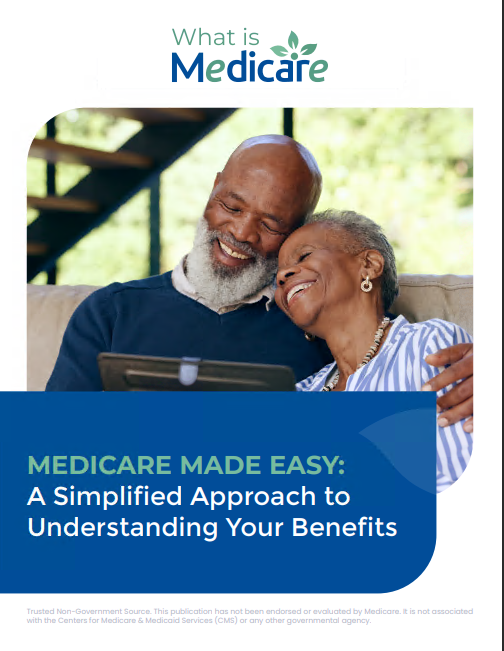Key Takeaways
-
Medicare Part B premiums and deductibles are increasing in 2025, impacting healthcare budgets for most beneficiaries.
-
Understanding these changes and planning ahead can help you manage costs and make informed decisions during enrollment.
What You Need to Know About Medicare Part B Costs
Medicare Part B, covering essential medical services like doctor visits and outpatient care, is undergoing cost adjustments in 2025. Whether you’re new to Medicare or already enrolled, staying updated on these changes ensures you’re prepared for your healthcare expenses.
Premium Hikes for 2025
One of the most noticeable changes for Medicare beneficiaries in 2025 is the increase in the monthly premium for Part B. The standard monthly premium will rise to $185. This adjustment reflects broader healthcare trends, including rising medical costs and expanded services covered by Medicare.
Why Are Premiums Increasing?
Medicare premiums adjust annually based on several factors:
-
Healthcare inflation: As the cost of medical care increases, Medicare must account for higher spending.
-
Income brackets: Higher-income beneficiaries pay additional amounts based on income-related monthly adjustment amounts (IRMAA).
-
Policy adjustments: Legislative changes and increased coverage options also impact costs.
For most beneficiaries, the $185 premium applies unless you qualify for financial assistance or fall into a higher income bracket requiring additional payments.
Deductible Changes You Can Expect
The annual deductible for Medicare Part B is also increasing in 2025, rising to $257. This is the amount you’ll need to pay out-of-pocket before Medicare begins covering its share of your medical costs. Once you meet the deductible, Medicare typically covers 80% of approved expenses, leaving you responsible for the remaining 20%.
Planning for Higher Deductibles
Budgeting for a higher deductible means:
-
Reviewing your healthcare usage: Are you likely to reach the deductible early in the year?
-
Evaluating supplemental coverage: A Medigap plan or other insurance may help with out-of-pocket costs.
-
Considering preventive care: Medicare fully covers many preventive services, which do not count toward your deductible.
What IRMAA Means for Higher-Income Beneficiaries
If your income exceeds specific thresholds, you’ll pay more than the standard premium. The Income-Related Monthly Adjustment Amount (IRMAA) adds a surcharge based on your modified adjusted gross income (MAGI) from two years prior. For 2025, Medicare will use 2023 tax return data to determine IRMAA levels.
Steps to Manage IRMAA Costs
-
Review your tax filings: Ensure accuracy, as errors could place you in a higher bracket.
-
Request a redetermination: If your income has decreased due to life events, such as retirement, you can file for reconsideration.
-
Consider income planning: Speak with a financial advisor about strategies to minimize taxable income.
How These Changes Affect Your Budget
Rising premiums and deductibles can strain fixed incomes, particularly for retirees. Let’s break down the key financial impacts:
-
Monthly premium costs: At $185 per month, you’ll need to allocate at least $2,220 annually for premiums.
-
Out-of-pocket expenses: The $257 deductible means higher upfront costs for medical services early in the year.
-
Potential surcharges: Higher-income earners could see premiums climb significantly above the standard rate.
Tips for Financial Preparation
-
Set up a dedicated healthcare fund: Save monthly to cover premiums and deductibles.
-
Analyze your healthcare needs: Predict your annual costs based on past medical expenses.
-
Explore assistance programs: State and federal programs, such as Medicaid or Medicare Savings Programs, may help offset costs.
Understanding Open Enrollment and Cost Adjustments
Medicare’s Open Enrollment period runs annually from October 15 to December 7. This window is critical for:
-
Reviewing plan options: Ensure your plan meets your needs and aligns with cost changes.
-
Switching plans: Move to another plan or return to Original Medicare if it better suits your budget.
-
Confirming provider networks: Verify that your preferred doctors and specialists remain in-network.
Why Open Enrollment Matters
Changes in premiums and deductibles make this period a prime opportunity to reassess your coverage. Even if you’re satisfied with your current plan, reviewing available options can uncover cost-saving opportunities or enhanced benefits.
Coordinating Medicare With Supplemental Coverage
Many beneficiaries supplement their Original Medicare with Medigap policies, Medicare Advantage plans, or employer-sponsored insurance. These options can help mitigate the financial impact of rising premiums and deductibles.
Medigap and Deductibles
Medigap policies often cover the 20% coinsurance left by Part B. However, Medigap premiums are separate and vary by plan and provider.
Medicare Advantage Plans
While these plans typically include Part B coverage, they may offer additional benefits like vision, dental, or hearing. Keep in mind that plan costs and benefits can vary widely, so compare options carefully.
How the 2025 Changes Tie Into Broader Medicare Trends
The adjustments to Part B costs in 2025 align with broader Medicare trends:
-
Enhanced services: Medicare continues to expand coverage, particularly for preventive care and chronic condition management.
-
Cost-sharing evolution: Rising deductibles and premiums reflect efforts to balance beneficiary contributions with federal funding requirements.
-
Future projections: Further adjustments are likely in subsequent years, emphasizing the importance of staying informed.
Key Deadlines to Keep in Mind
Mark your calendar for these important dates:
-
January 1, 2025: New premiums and deductibles take effect.
-
October 15 – December 7, 2024: Open Enrollment period to review and adjust plans.
-
Throughout 2025: Special Enrollment Periods (SEPs) may apply if you experience life events like moving or losing other coverage.
Staying Ahead of Deadlines
Avoid surprises by:
-
Setting reminders for key dates.
-
Reviewing Annual Notice of Change (ANOC) letters to understand plan adjustments.
-
Checking eligibility for Special Enrollment Periods if circumstances change.
Tools and Resources to Help You Navigate Costs
Several resources can support you in understanding and managing Medicare Part B costs:
-
Medicare.gov: Provides official information about premiums, deductibles, and plan options.
-
State Health Insurance Assistance Programs (SHIPs): Offer free, personalized counseling.
-
Financial advisors: Can help optimize your healthcare spending and income planning.
Proactive Steps You Can Take
-
Use online calculators to estimate annual healthcare expenses.
-
Contact SHIP counselors for localized support.
-
Schedule a Medicare review session annually to reassess your needs.
Planning Ahead for Medicare’s Future
As Medicare evolves, beneficiaries face ongoing cost adjustments and policy changes. Taking a proactive approach to understanding your coverage, anticipating future increases, and exploring supplemental options can alleviate financial stress and enhance your healthcare experience.
Your Action Plan
-
Stay informed: Keep track of changes to Medicare costs and coverage.
-
Evaluate annually: Regularly review your healthcare needs and plan options.
-
Seek assistance: Don’t hesitate to reach out to professionals or local resources for guidance.
A Clearer Path to Managing Medicare Costs
Navigating Medicare Part B cost increases in 2025 doesn’t have to be overwhelming. By staying informed, reviewing your options during Open Enrollment, and planning for future expenses, you can confidently manage your healthcare budget while ensuring access to the services you need.








